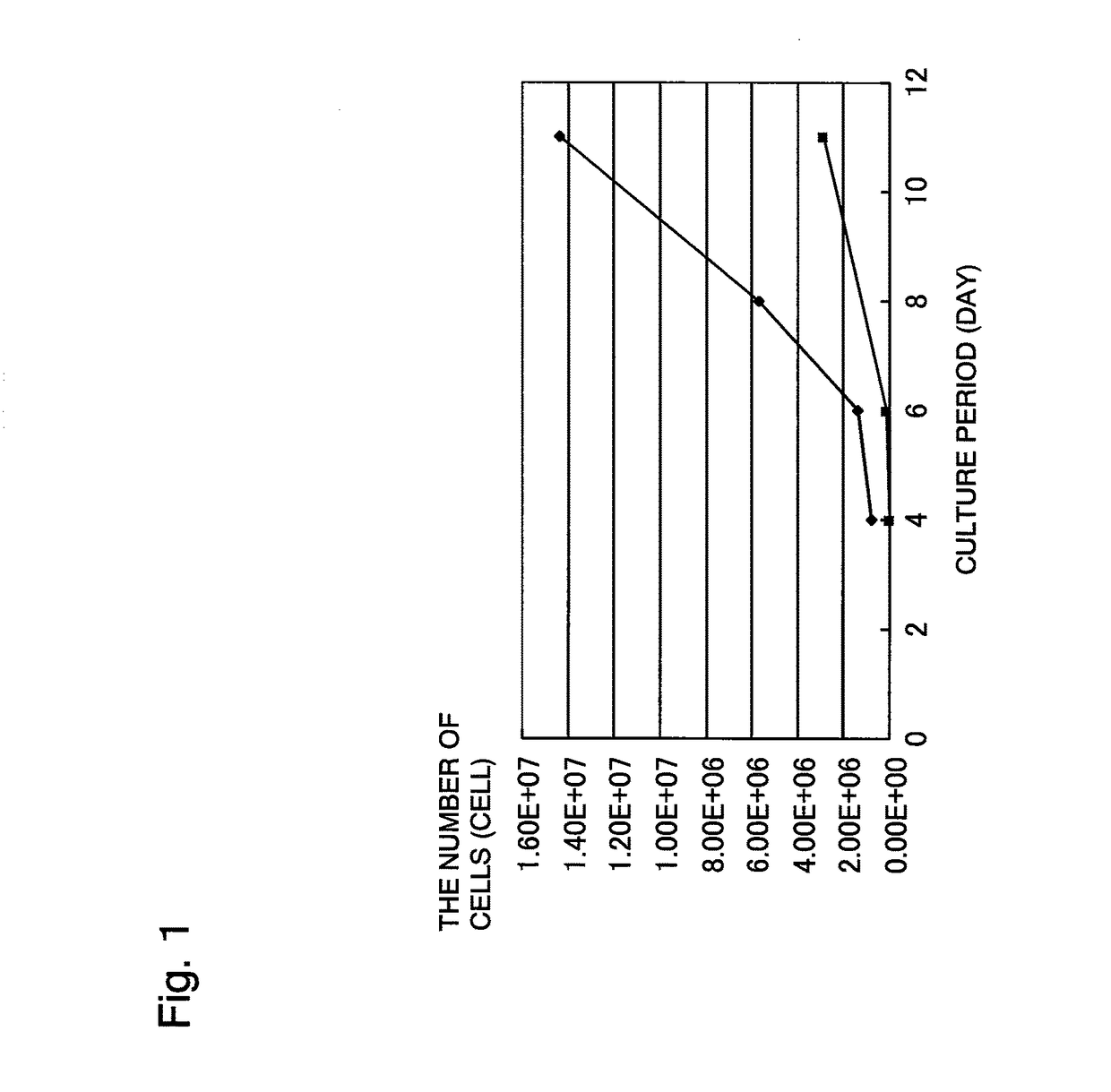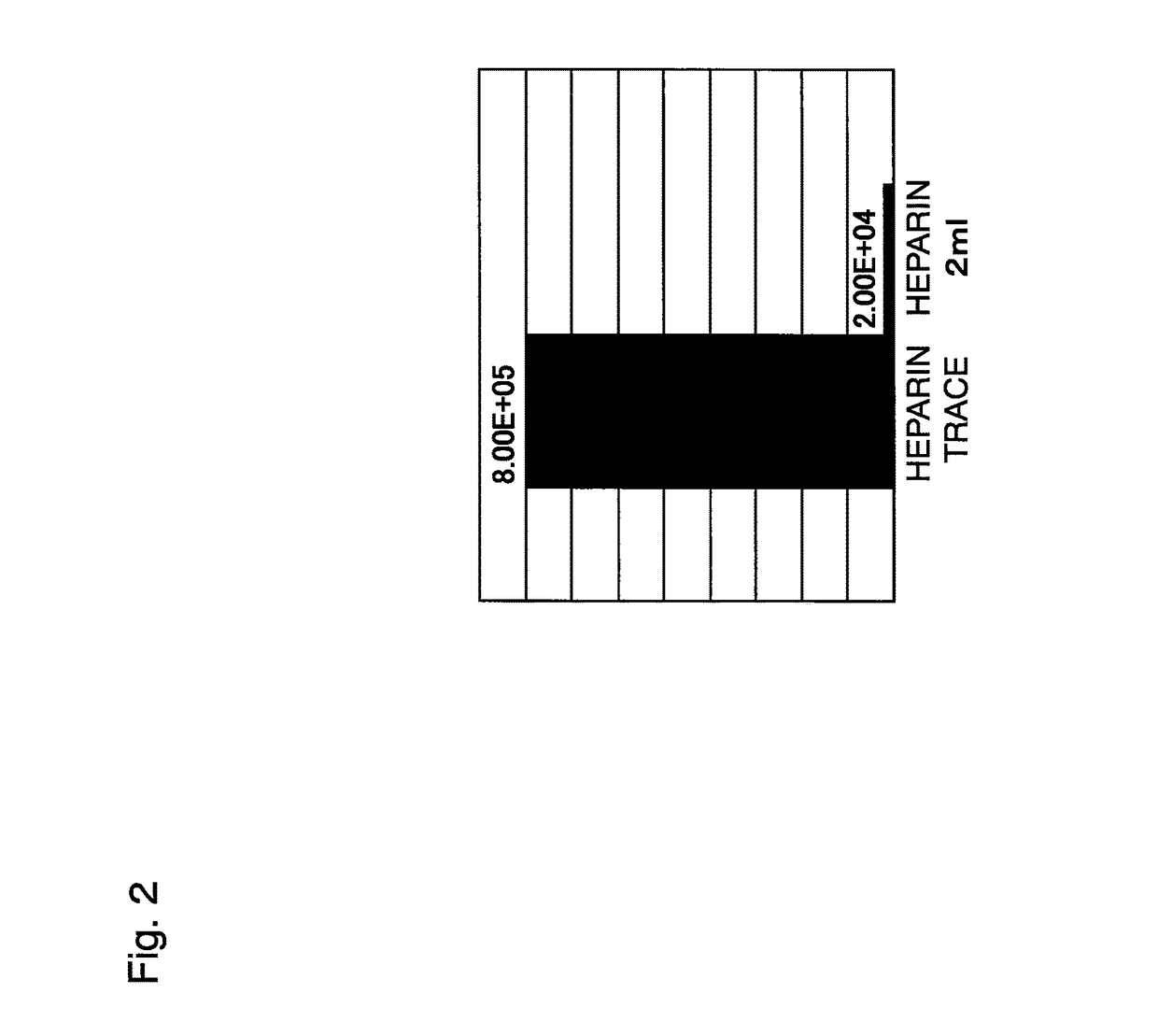Cell growth method and pharmaceutical preparation for tissue repair and regeneration
a cell growth and tissue technology, applied in the direction of drug compositions, skeletal/connective tissue cells, metabolic disorders, etc., can solve the problems of hardly producing growth equivalent to that in serum-supplemented culture medium, difficult recovery of functions of injured nervous tissues, and possible contamination with pathogens, etc., to achieve excellent growth efficiency, improve growth rate, and grow quickly
- Summary
- Abstract
- Description
- Claims
- Application Information
AI Technical Summary
Benefits of technology
Problems solved by technology
Method used
Image
Examples
example 1
[0214]60 mL of a bone marrow fluid was collected from a brain disease patient using a blood collection tube whose inner wall was wetted in advance with trace heparin (0.1 U per mL of bone marrow fluid). The collected bone marrow fluid was added to 210 mL of a medium to bring the whole amount to 270 mL. This bone marrow fluid-containing culture solution was divided to 18 portions, each of which was then seeded in an amount of 15 mL to a dish of 150 mm in diameter (Tissue culture dish #3030-150 manufactured by IWAKI). 5 mL of the medium was added thereto to bring the whole amount to 20 mL per dish. After the seeding, these dishes are left standing in separate incubators (9 dishes per incubator), followed by culture at 37±0.5° C., in a 5% CO2 atmosphere. The bone marrow fluid was confirmed in advance by peripheral blood examination to be not infected with HIV, ATL, HB, HC, syphilis, human parvovirus B19, and the like.
[0215]The medium was prepared by adding 56.8 mL of serum derived from...
example 2
[0223]Culture was performed under the same conditions as in Example 1 except that an αMEM medium was used instead of DMEM as a standard medium. The results are shown in FIG. 6. These results demonstrated that when an αMEM medium was used, the use of human serum produces more rapid growth than obtained with FBS, by reducing the amount of heparin as well.
example 3
[Method]
[0225]Three rat thigh bones were collected, and bone marrow cells were washed out of each thigh bone using DMEM (5 ml) and supplemented with the following agents to prepare three sample groups:[0226](i) DMEM (5 ml)[0227](ii) DMEM (5 ml)+heparin (2 μl)[0228](iii) DMEM (5 ml)+heparin (2 μl)+protamine (2 μl)
[0229]Each sample was washed with DMEM and placed in 10 ml of a culture solution (DMEM+10% FBS+1% penicillin / streptomycin+2 mM L-glutamine), which was then seeded to a 10 cm dish and cultured for 14 days. Subculture was started at the point in time when the cell density exceeded 5,500 cells / cm2.
[Results]
[0230]As shown in FIG. 8, the cells untreated with heparin had a larger initial amount and also a higher growth rate than those of the cells treated with heparin, and this was obvious on culture days 8 to 11. Moreover, the cells supplemented with protamine, a substance inhibiting heparin activity, also had a low initial amount and a low growth rate, as in the cells treated wi...
PUM
| Property | Measurement | Unit |
|---|---|---|
| temperature | aaaaa | aaaaa |
| diameter | aaaaa | aaaaa |
| speed | aaaaa | aaaaa |
Abstract
Description
Claims
Application Information
 Login to View More
Login to View More - R&D
- Intellectual Property
- Life Sciences
- Materials
- Tech Scout
- Unparalleled Data Quality
- Higher Quality Content
- 60% Fewer Hallucinations
Browse by: Latest US Patents, China's latest patents, Technical Efficacy Thesaurus, Application Domain, Technology Topic, Popular Technical Reports.
© 2025 PatSnap. All rights reserved.Legal|Privacy policy|Modern Slavery Act Transparency Statement|Sitemap|About US| Contact US: help@patsnap.com



